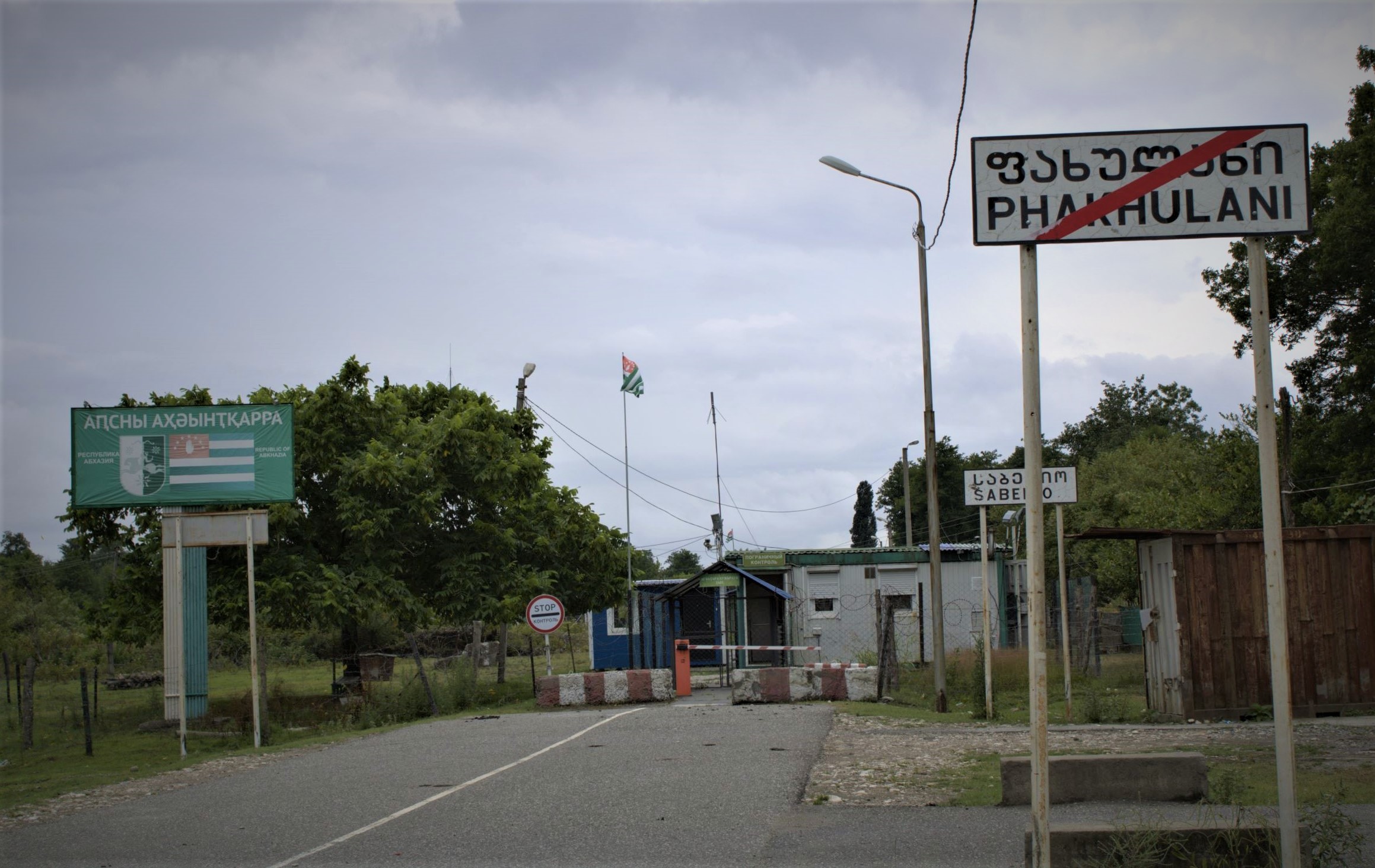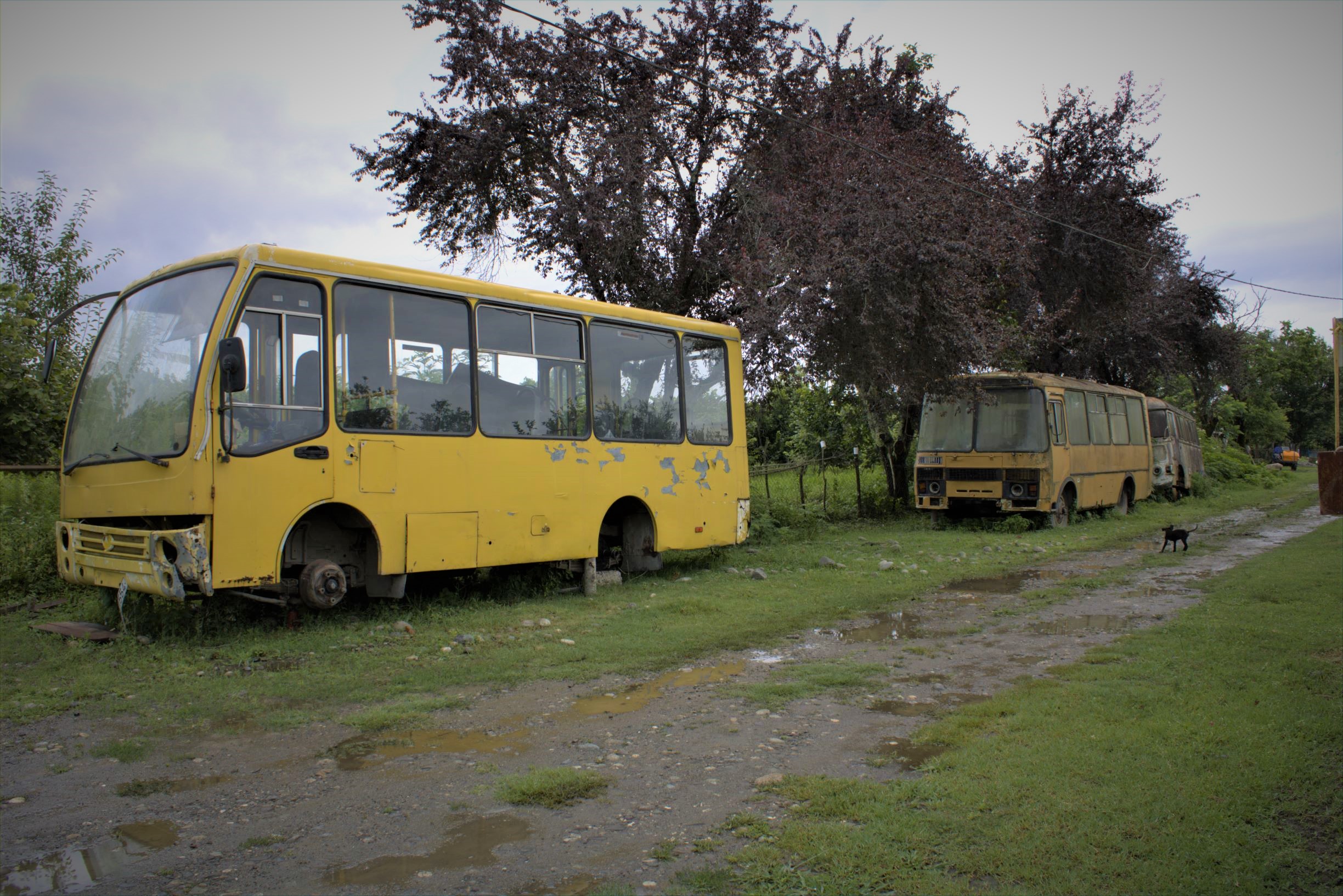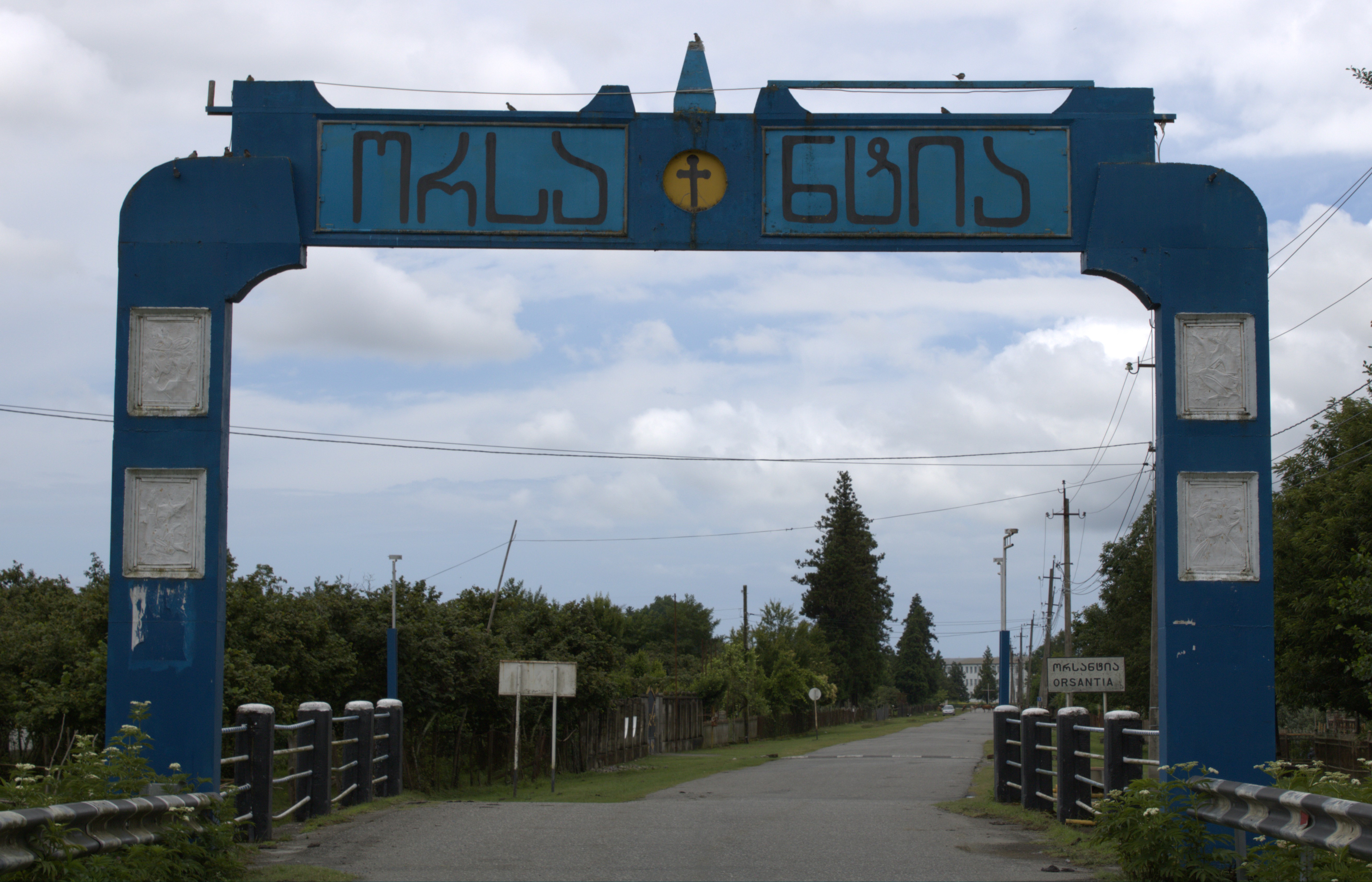Reports
The needs of the people living near the occupation line (Pakhulani, Tkaia, Lia, Rike, Khurcha, Orsantia)
22.07.2020
In early July, the team members of the Democracy Research Institute visited the villages of Zugdidi and Tsalenjikha municipalities in the Samegrelo-Zemo Svaneti region, which border the occupied territory of Abkhazia.
The Pakhulani community
The Pakhulani community, which includes four villages (Pakhulani, Kalaghali, Tskoushi, Chvele), is located in the Tsalenjikha municipality, on the right bank of the Enguri River. The community can only be accessed through a Georgian police post, where law enforcement officers check the documents of passengers, specify the purpose of their visit and keep copies of their identification documents.
The caution of law enforcement officers has a reason. In May, the Russian military began renewing the barbed wire between Pakhulani and Saberio - replacing old, damaged poles with new ones and installing new barbed wire. Surveillance cameras installed near the dividing line are easily visible to the naked eye.
According to the 2002 census [1], 3,828 people lived in the Pakhulani community, while according to the 2014 census - the number of local population decreased to 1,320. [2] According to the locals, there are currently about 700 households in all the four villages.
The so-called Saberio-Pakhulani checkpoint is located at the end of the settlement. Before the imposition of the pandemic-related restrictions, hundreds of people had been able to access the rest of Georgia on a daily basis through this checkpoint, which is currently closed.
The socio-economic situation of the population of the Pakhulani community is worrisome. Most of the agricultural lands were lost as a result of the so-called "borderization". Currently, the main source of income for the locals is nuts, which are being destroyed by Asian bugs. The locals complain about the fact that they have to buy chemicals at their own expense and that the help of local authorities is not enough. The cattle also often go missing. We were told that if the cattle cross the dividing line, locals have to pay a “ransom” to get them back.
The community does not have a gas supply network, due to which, the population has to use firewood in winter. Drinking and irrigation water is a constant problem of Pakhulani. There are 5-6 shops in the settlement, but there is no pharmacy. Locals are waiting for the opening of a new outpatient clinic every day, which has already been built, but remains closed.
The population of Pakhulani is especially concerned about the fact that the cemetery of the village is now on the other side of the so-called border. It can be easily seen from the vicinity of the "border" that the cemetery is secured "from visitors" with an iron chain lock.
When we asked the locals what they demanded from the local or central government, they said they would like us to mediate an installment of a speed bump (sleeping policeman) near the village school.


The village of Tkaia
Tkaia is located in the Tkaia-Zugdidi municipality, on the left bank of the Enguri River, 125 meters above sea level. The village borders the occupied territory of Abkhazia. It is possible to enter the village freely.
According to the 2002 census, 1,332 people lived in Tkaia, while according to the data of 2014, 683 people live in the village.
The people we interviewed named the unstable supply of irrigation water as the main problem of the village. According to them, due to the high temperature in summer, the irrigation canal dries up, which hinders their agricultural activities.
The village does not have a pharmacy or an outpatient clinic. The migration of the youth is high.
The village of Lia
The village of Lia is located in the Tsalenjikha municipality, along the Zugdidi-Jvari road and railway, on the left bank of the Enguri River. The village borders an area currently controlled by Russian border guards. It is possible to move freely in the village.
According to the 2002 census, 2,081 people lived in Lia, while according to the 2014 census - 1,523 people live in the village. According to the locals, the village is mostly inhabited by older people.
The village has no gas supply. The main source of income of the local population is nuts, which, according to them, are being destroyed by Asian bugs. It should be noted that, according to them, the municipality helps them to fight against the parasite.
Respondents also talked about the problems related to the lack of registration of agricultural land. According to them, some of the locals, who have not registered their lands, cannot receive vouchers provided by the state agricultural programmes.
The village of Rike
The village of Rike is located in the Zugdidi municipality, 8 kilometers from the center of Zugdidi. The village borders an area currently controlled by Russian border guards. It is possible to move in the village freely.
According to the 2002 census, 3,265 people lived in Rike, while according to the 2014 census, the number of local population decreased to 1,552. Locals say there are currently about 800 households in the village.
The village has a gas supply network, high school, kindergarten, shops, pharmacy and outpatient clinic. The population named unemployment and high outflow of young people as the main problems.
The village of Khurcha
The village of Khurcha is located in the Zugdidi municipality, 16 kilometers from the city of Zugdidi, on the right bank of the Enguri River and is controlled by the central government of Georgia. The geographical border of the village is located beyond the Khurcha River. However, the locals are deprived of the opportunity to cross the river. According to the locals, the Russian military strictly control the so-called border - "If they used to check it 2-3 times, now they do it once every half an hour."
The village can be accessed only through the Georgian police post, where law enforcement officers check the documents of passengers and specify the purpose of their visit. After passing the checkpoint, it is possible to move freely in the village.
According to the 2002 census, 463 people lived in Khurcha, while according to the 2014 census – 535 people live in the village. According to the locals, there are currently about 90 households in the village, about 38 of which still unsuccessfully demand full compensation for the damage suffered by them as a result of the 1993-1998 and 2008 hostilities.
Khurcha is naturally small. In addition, the village lost its arable lands and pastures as a result of the occupation, due to which, the population is virtually unable to be engaged in agriculture.
There is a kindergarten in the village, while schoolchildren go to school in the village of Nabakevi. The building of an outpatient clinic has been standing in Khurcha for many years, but it is not functioning. The village does not have a doctor and only relies on the nurse.
The closure of the so-called Khurcha-Nabakevi checkpoint virtually completely isolated and halted the village. Local small businesses, cafes and fast food facility have been closed, about 40 taxi drivers have been left jobless. Locals talk about the lack of prospects in the village and regret that the central government has not offered any alternative to them. They think of leaving the village if the road remains closed. They say they constantly have a feeling of insecurity. "It is of political importance that the population stay here," they say and express concern over the fact that the central or local government offer them no prospects for remaining in the village.


The feeling of hopelessness was further exacerbated after municipal transport was halted due to the coronavirus pandemic. "The bus driver used to take a shopping list of at least ten people to Zugdidi, and we have been left without essentials after the bus was halted," one of the locals told us, adding that Khurcha is a bus cemetery, as only the oldest and malfunctioning vehicles are allocated to them.
The village is Orsantia
The village of Orsantia is located in the Zugdidi municipality, on the left bank of the Enguri River. The village borders the occupied territory of Abkhazia. According to the 2002 census, 4,499 people lived in Orsantia, while according to the 2014 data – 2,052 people live in the village. According to locals, there are currently about 700 households in the village.
It is possible to move in the village freely. The so-called Orsantia-Otobaia checkpoint had been functioning in the village before 2017. The people of Orsantia and Otobaia have close kinship and suffer from the closure of the checkpoint. The above has become a reason for the increasing number of cases of illegal crossing of the so-called border.


A community center of the LEPL Public Service Development Agency of the Ministry of Justice is functioning in the village. Locals name unemployment as the biggest problem.
[1] Main results of the first national census of Georgia 2002, Volume II, available at http://census.ge/ge/2002-results
[2] Population census 2014, National Statistics Office of Georgia (November 2014) https://www.geostat.ge/index.php/ka
სოხუმში არ სურთ რუსეთის მოქალაქეებს უძრავი ქონების შეძენის უფლება ჰქონდეთ
აფხაზეთის დე ფაქტო პარლამენტმა დააინიციირა კანონპროექტი „აფხაზეთის რესპუბლიკის ოჩამჩირის, ტყვარჩელისა და გალის
რაიონების სოციალურ-ეკონომიკური განვითარების დონის ამაღლების ღონისძიებების შესახებ“.
25.07.2024
For GEL 400 damage caused to the Ministry of Internal Affairs, the authorities are going to send two young men to prison from 3 to 6 years
24 July, judge Natia
Gudadze, once again considered the change
of the type of the
measure of restraint for 19-year-old Omar Okribelashvili and
23-year-old Saba Meparishvili.
24.07.2024
Meeting - "Georgia Chooses Europe"
On July 17, the Democracy Research
Institute held a meeting - "Georgia Chooses Europe", in
Gurjaani.
19.07.2024






